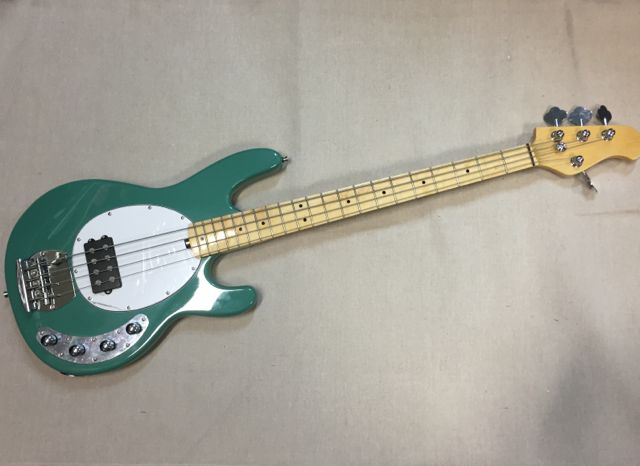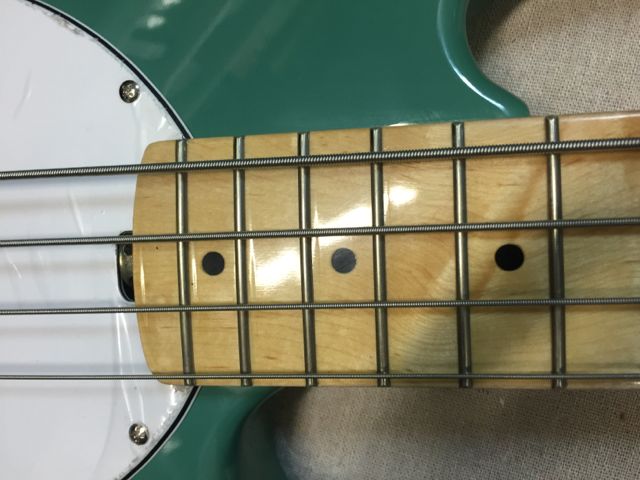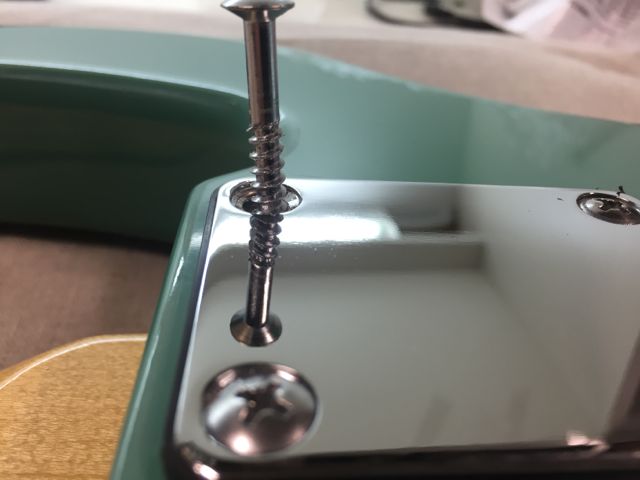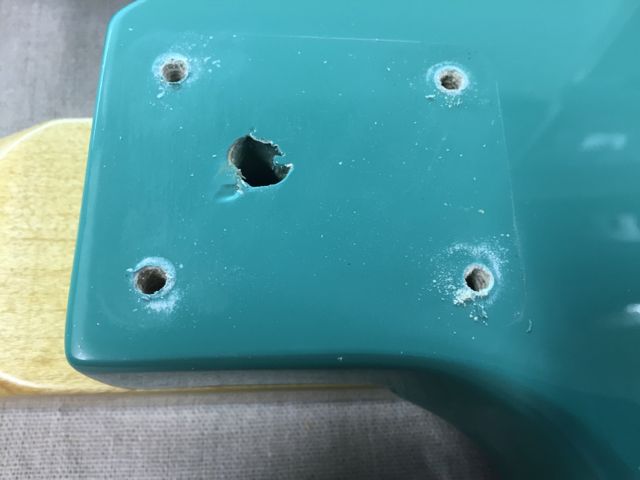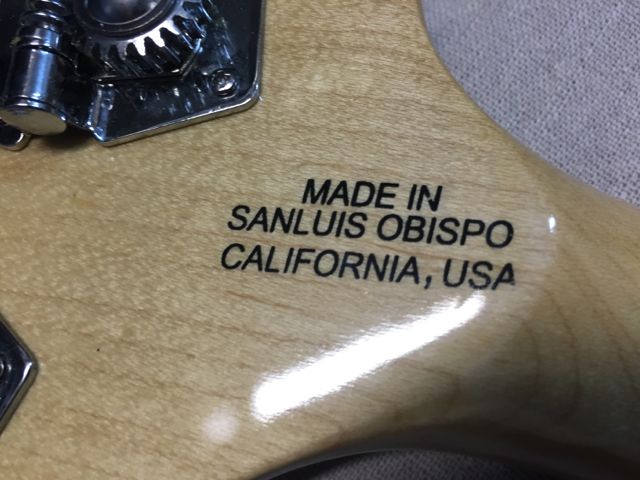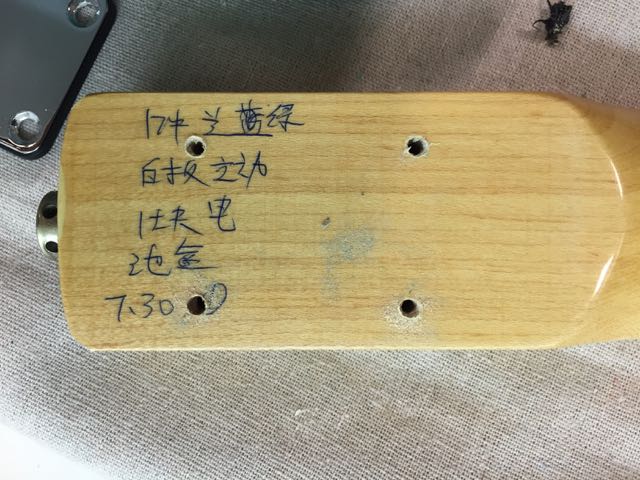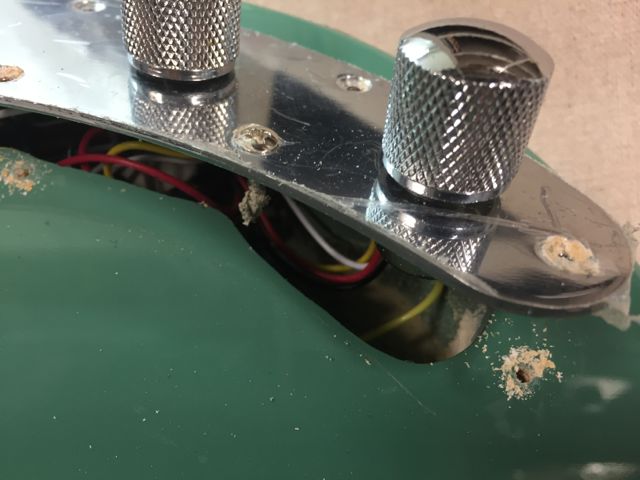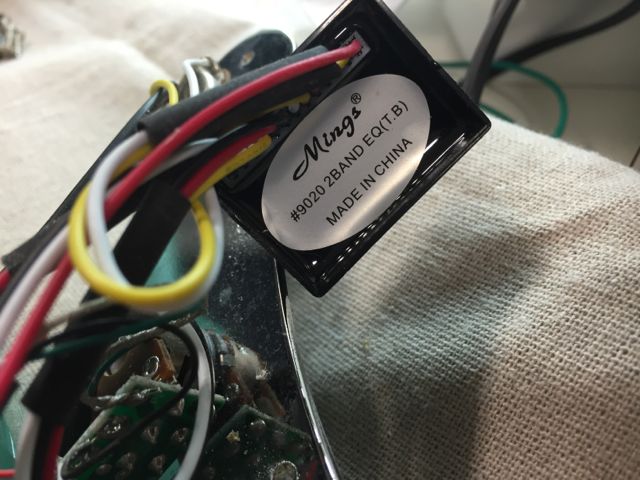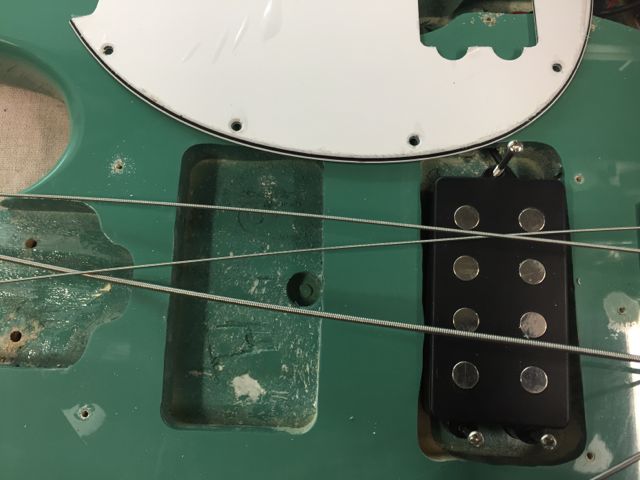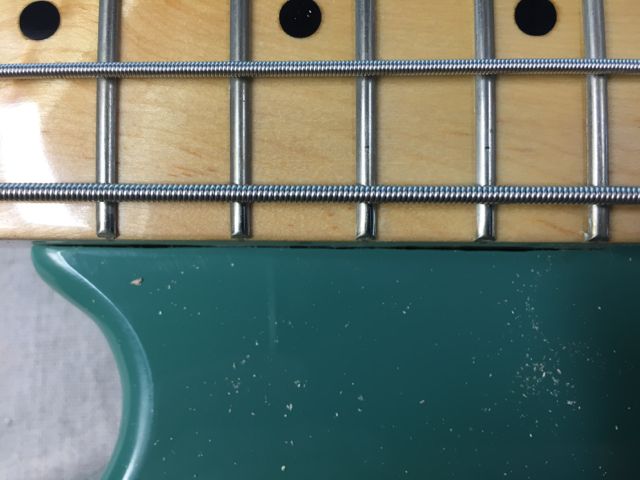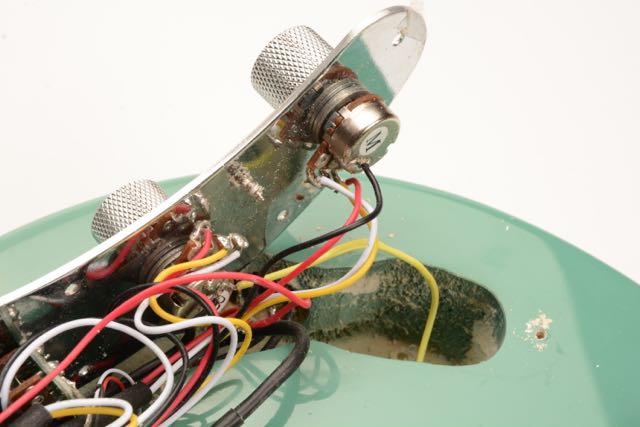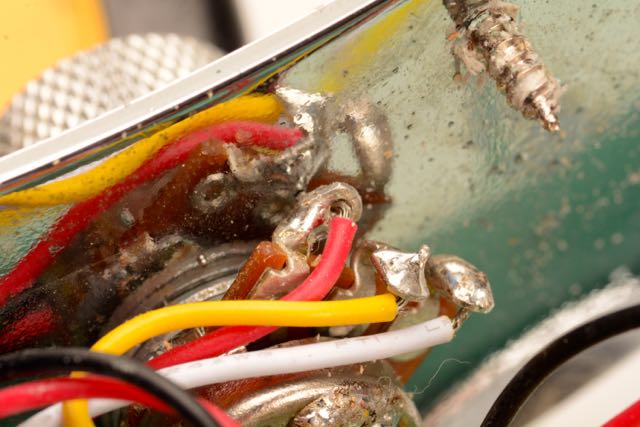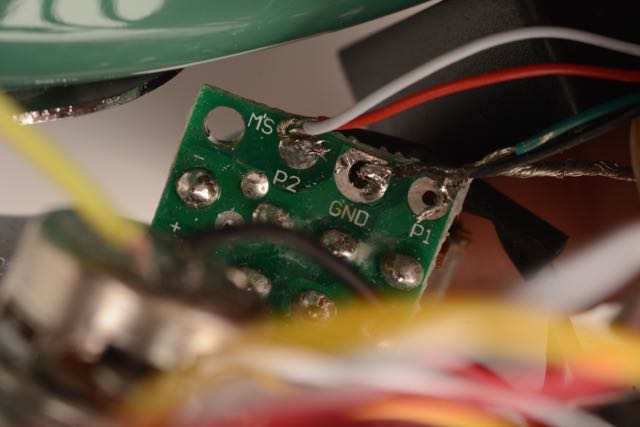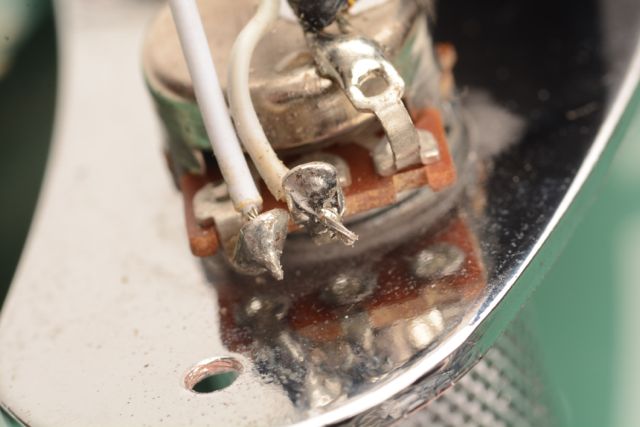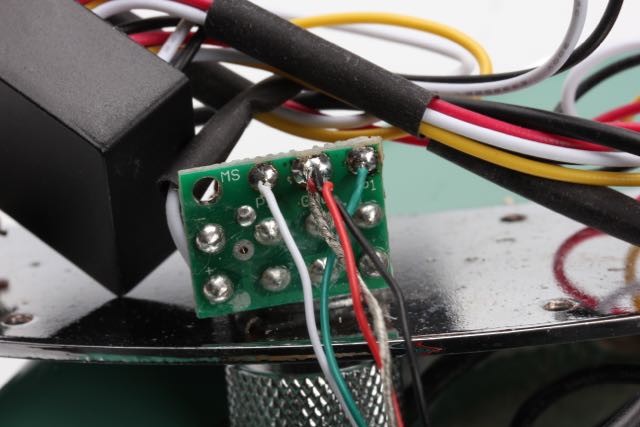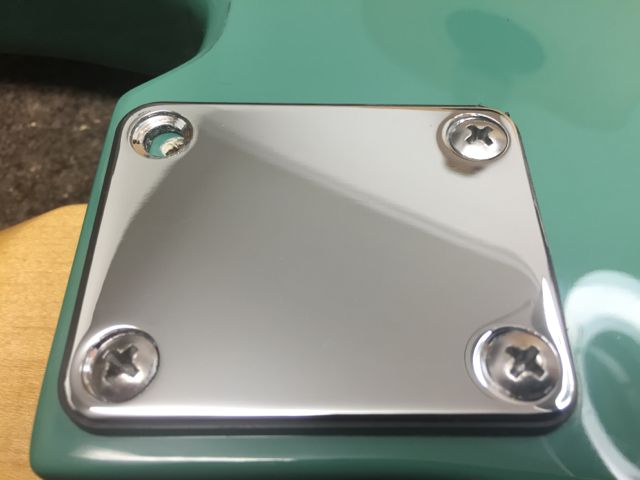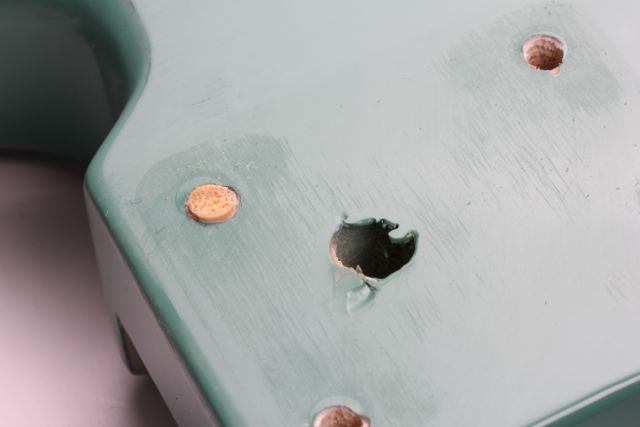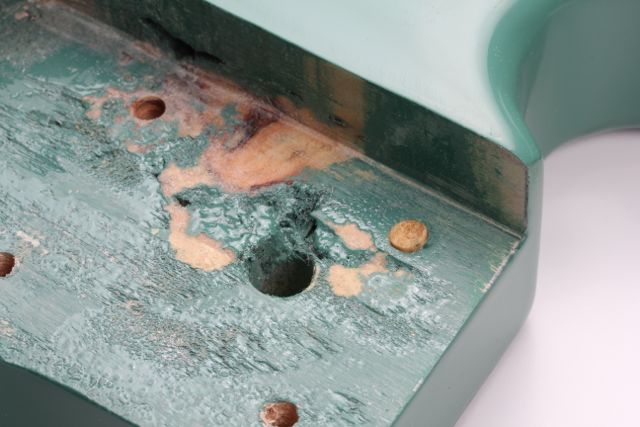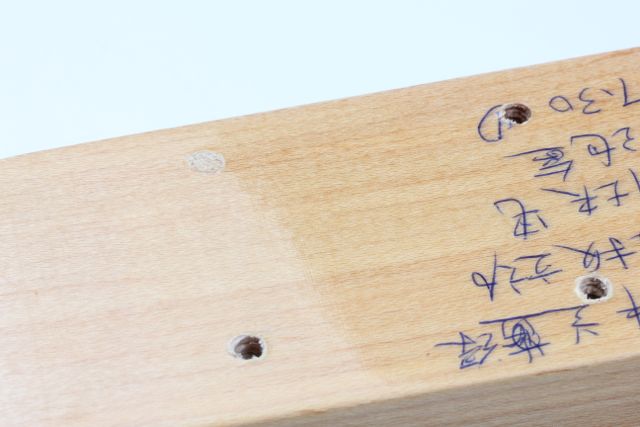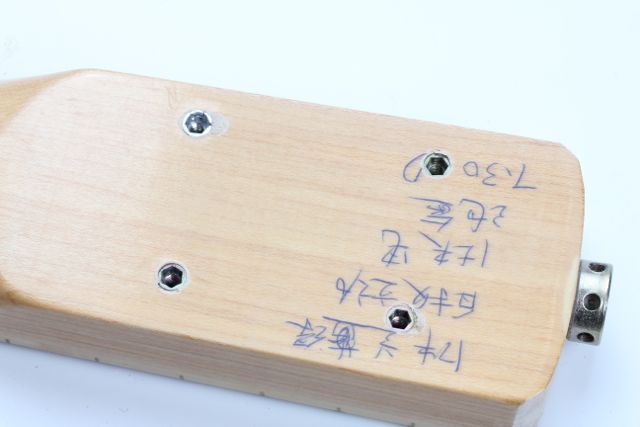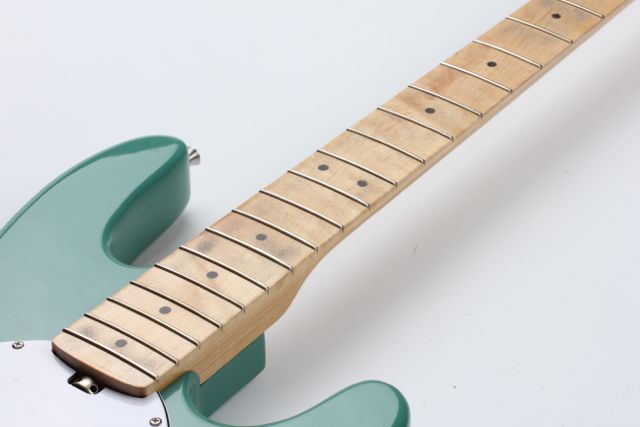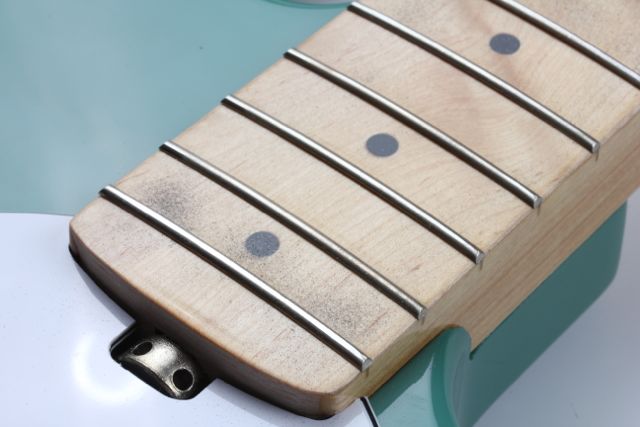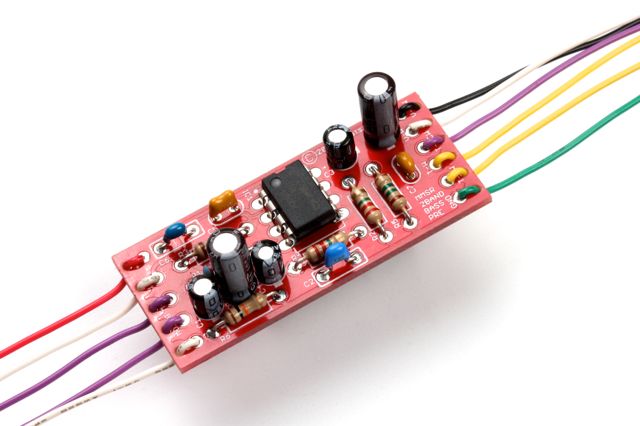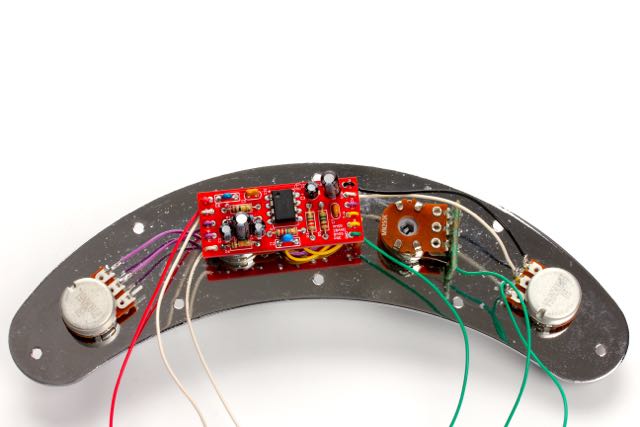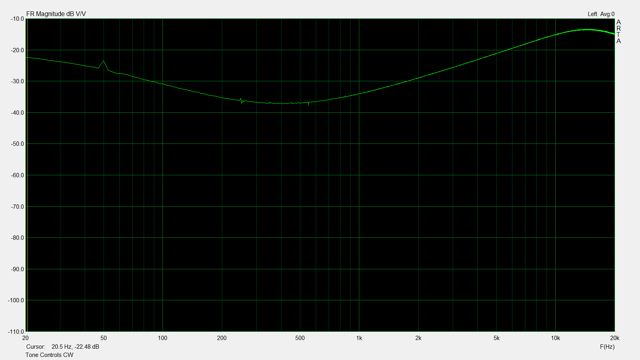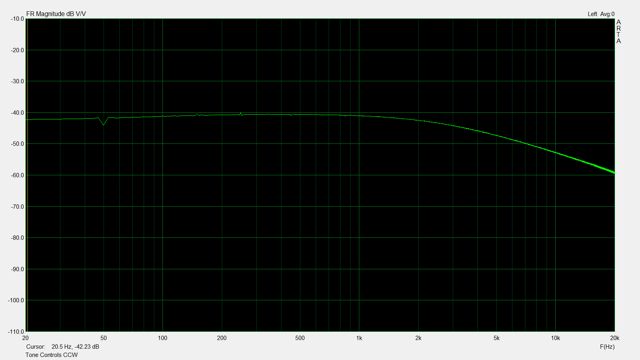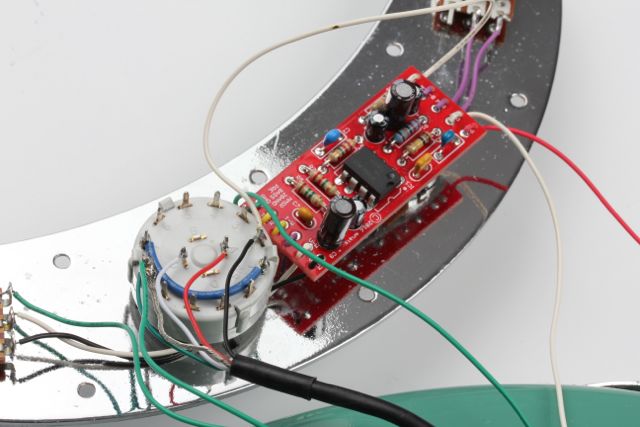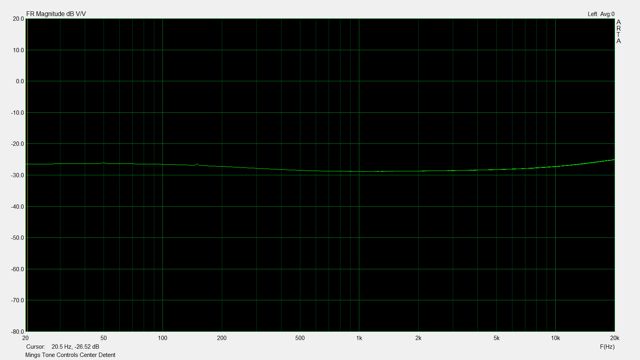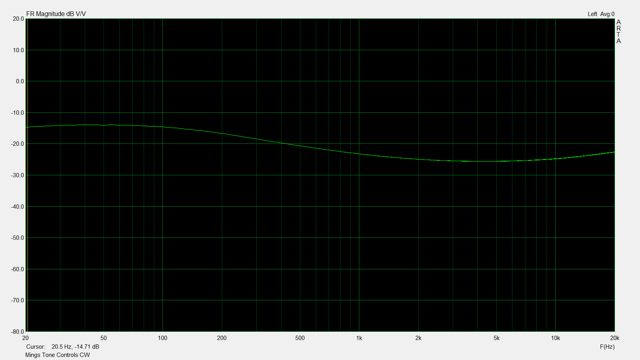19 August 2016
Some notes and observations about a ChingRay bass guitar purchased from AliExpress. The opinions expressed are my own; use at your own risk. Please do not copy and repost these photographs or link directly to them from my server.
Always late to the party, I became aware of counterfeit musical instruments being sold from Chinese sites only this year. Even then they did not hold my interest for long; copy instruments have been around for ages. My first bass was a copy Jazz bass - an Aria I think.
But once I saw the MusicMan StingRay counterfeit (I have removed the logo on the headstock from the image) all bets were off. The originals always been appealing to me aside from their price tag - kind of like an update of the P Bass. At a little over $200 USD shipped these counterfeits are more than $200 Australian dollars cheaper than what a S.U.B. Ray4 sells for here. A real EBMM Stingray? Forget about it! Think somewhere north of $3000 here. For those Stateside the counterfeit might hold little appeal since they aren't much cheaper than the real copy.
For the vendor I chose I found that for less than $10 I could upgrade to EMS shipping rather than China Post with an estimated delivery time of 11 - 19 days rather than 23 - 49 days. That turned out to be false economy (the moral of this whole sorry tale) as even though I ordered on the 27th of July the vendor I was dealing with did not bother sending it out until the 11th of August or over two weeks later. They were able to somehow falsify the shipping date initially so that it appeared as though it left them quickly, but the bass did not show up until the 19th of August. Oh well, it could have been worse. I might have ended up with nothing at all.
That wouldn't have been too bad because as I understand it AliExpress acts as a broker or escrow service between you and the vendor. If the item doesn't arrive you can dispute the transaction. They hold payment to the seller until the transaction is completed or a resolution is reached between the parties.
All the while I felt filthy for paying for such a thing.
Have you heard the phrase "Good from afar but far from good"? The asymmetry of the strings across the 21st fret suggest that the neck is misaligned.
Unlike the picture from the vendor, the neck plate contains only four screws instead of six. Nor does it have a logo. Looking at the construction it is hard to see how a six screw plate could ever work as the neck pocket seems too short.
In any case, the neck is coming off. But the screw came out at an angle.
The holes for the neck screws do not form a perfect rectangle, nor are they drilled out sufficiently for the screws to bite the neck alone. I'm going to leave this part alone for now as I have already ordered multiple threaded inserts from Studio 939.
Maybe they are just getting slack in SLO town. (Sorry, I have no idea why these images show up rotated on iOS 9.3.5. Maybe because they were edited on a Mac?)
But their written Chinese is getting pretty good!
I was temporarily distracted by the electronics so I cracked open the banana plate. Seems that the cavity was routed so that one of the screws failed to contact the body at all. A scrap of masking tape held it in place.
Inside is a potted module with a registered trademark symbol in case some unscrupulous organization tries to pass off an inferior product as a genuine "Mings". Further testing showed that the treble pot - which appears to be wired in reverse - squealed like a pig when turned to the extreme CCW. It seemed to have little effect on the treble response of the pickup but seemed only to increase hiss and so shall be referred to as the squeal knob from now on.
It also appears that the pickup's two windings go individually to a stereo pot that allows blending. A center detent in the pot did not correspond with the perceived maximal output of the two as you might expect. I grant that there may have been a wiring error causing some of these issues.
The body comes routed for two pickups. But what caught my eye is how roughly the cavities are routed. Many forum threads about Chinese instruments cite CNC machines as the method or even the reason why so many copy instruments are made. But even the most poorly maintained CNC machine run by unskilled laborers are unlikely to create such random shapes.
Ironically, I think what we have here is a handcrafted instrument.
Just look at the left edge of the neck pocket. I've made similar edges cutting freehand with a router. It is this slanted edge of the pocket that is forcing the neck to the right, causing misalignment of the strings.
22 August 2016
With the bass temporarily pieced back together it was possible to tune up and play. Neck relief seemed a bit excessive but the truss rod adjustment was quite stubborn and refused to tighten. I was able to loosen it then bring it back to where it was previously. Something for another day.
Tuning machines seem to operate smoothly. With a fresh set of batteries the volume knob operates more like an on/off switch with little control over the level. As noted previously the blend control likes to be set a little off center, while a full CW rotation gives a ludicrously thin tone. The squeal knob's squeal is quietest when the bass knob next to it is fully boosted. In fact, the bass knob can be used in conjunction with the squeal knob to create realistic AM distance tuning effects.
With no amplifier modelling plugged straight into an interface the instrument sounds good with the bass knob boosted. When the strings are plucked hard the onboard preamp will itself clip. Basic tone is pretty satisfying...almost addictive. The bones that make the StingRay tone might be there. While I'm happy to play with the electronics I'm hesitant to buy pickups for this thing just yet.
23 August 2016
Looking closer under the banana plate I noticed something I hadn't seen the first time.
The CCW lug of the treble pot (inexplicably labeled "B"; the bass control is marked "M") is shorted to the banana plate.
Soldering of the pickups to the blend pot isn't too good either.
Volume pot lugs were touching (I gave them a gentle shove prior to taking the photo).
Seems to me they have sent an instrument that did not pass QA. After correcting some of the wiring issues the squealing was gone, the volume pot worked and the overall tone was better. It seems as though there is still something wrong with the way the pickup is wired.
24 August 2016
Another day, another stab at getting this working as designed. The pickup consists of two single coil pickups mounted parallel to each other. Each pickup is brought to the control plate with a four conductor plus shield cable. Previously they were wired...strangely. Not long after I took the photo above of the blend pot the wires from one pad simply fell off.
Since humbucking pickups are correctly wired out of phase to each other I took the black wire from the "neck" pickup and connected it to the red wire from the "bridge" pickup. These and the shield went to the ground pad. After that it was a simple matter of running the two remaining wires to each pot. Centered gives you a blend.
It worked as expected though having a blend knob does not seem like a normal StingRay scheme. The center position gives you the least noise while the two extremes are pretty noisy due to the lack of shielding. The tone between the two extremes is not all that different from each other due to the close physical spacing of the pickups. But at least it is now working as designed.
With everything working as designed, the tone pots seem surprisingly well matched to the pickup, if the overall tone is a little dull. Although there were three wiring issues things could have been worse; if the potted module was wired incorrectly it would have been near impossible to figure out which wires went where without documentation.
Maybe the next move will be to get the neck on straight, put some shielding in the cavities then replace the dead D string. Could work out to be a cheap beater bass after all...
2 September 2016
With the arrival of the threaded inserts I wanted to fill the worst offending neck screw hole before drilling out for the new screws and inserts. Just have a look at how far off that hole was drilled:
To save a trip to the store to buy a dowel I rummaged through the kitchen utensils and found some disposable chopsticks. It seemed like the appropriate material to use with this instrument.
Above photo shows how I used a flat file to straighten the uneven neck pocket on the left side.
Using the remaining screws I fit the neck and strung it to make sure it was now sitting straight. One by one I re-drilled the holes and fit the threaded inserts.
While I was at it I decided to level the frets.
The 20th fret was so low that I was unwilling to shave any more off since the rest of them were long since level. Now that the neck is straight and the frets are level it plays like any decent bass.
9 September 2016
I'd always intended to try an original 2 band preamp that was traced by Bajaman on the freestompboxes.org site (requires login). Seems that once upon a time someone was selling versions of it on Ebay that prompted a thread on Talkbass that eventually spawned a new PCB layout by a Talkbass member.
Supply of those boards appears to have fizzled out and links to the files have evaporated. Being a PCB kinda guy I could not resist making my own layout. To me the beauty of a PCB is that it simplifies wiring. So the first step was to eliminate the wires going to various spots on the PCB including one that is simply threaded in and out of two holes without connecting to anything on the PCB itself.
I've taken advantage of modern C0G (NP0) multilayer ceramic capacitors but various types should fit. Each wire lead solders straight to a pad then passes through a hole for strain relief. The lead positions correspond to the original design for ease of wiring.
With the new preamp fitted the bass has taken on a whole new character. Gone is the muffled sound of the original configuration with the Mings preamp that I had assumed was the product of the pickup. With the 2 band MMSR the pickup can sound quite zingy. It was mentioned on one of the Talkbass threads that the Chinese pickups don't work well with this preamp but I cannot agree; at least with the pickup that this bass was equipped with it works very well.
Rather than using the blend pot again I simply wired the two windings in parallel. Each coil had a DC resistance of 6k so there is a fair length of wire in there. I brought all the grounds to the 1/4" jack. It's almost as quiet as my Kubicki and I haven't bothered to shield it (yet?)
Cut and Boost?
There seems to be some confusion regarding the MMSR Preamp bass control's function. Here are some measurements I did prior to putting the preamp into the bass. Ignore the glitches at 50Hz; the preamp was sitting exposed on my bench with no shielding around it.
The above image is with both tone controls fully clockwise.
Next, both tone controls are turned fully counter clockwise.
Then I left the bass control fully CCW while turning the treble up until it was visually as flat in the upper range as possible. The measurements agree with others that have been previously posted.
18 September 2016
After taking the weird blend pot out of circuit I thought about what to replace it with. Since the 1/4" jack is mounted on the side moving the jack to the banana plate would leave an ugly hole. I've read that some MusicMan models used parallel pickup wiring while others used series.
I used an old Lorlin switch I had lying around. It's just like wiring a 120/240 volt switch that puts the windings in parallel or series. The advantage of the switch is that you get some tonal variation with the single pickup and hum cancellation in either mode.
While I have no regrets about implementing the switch I can already tell it will spend most of its time in the parallel mode. I'm a 120 volt kinda guy ;^p
Since I had the original Mings preamp intact with all the pots attached I decided to hook it up to the computer to test the frequency response as I had with the MMSR.
This is what I got with both tone pots at their center detents.
Both tone controls at their minimum setting.
Finally, both tone controls fully clockwise. No wonder it sounded dull.
